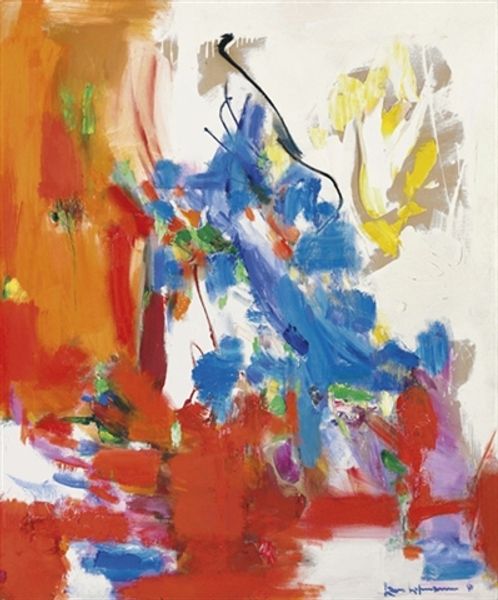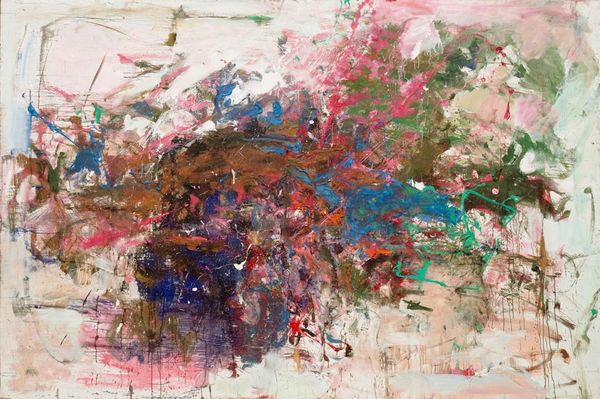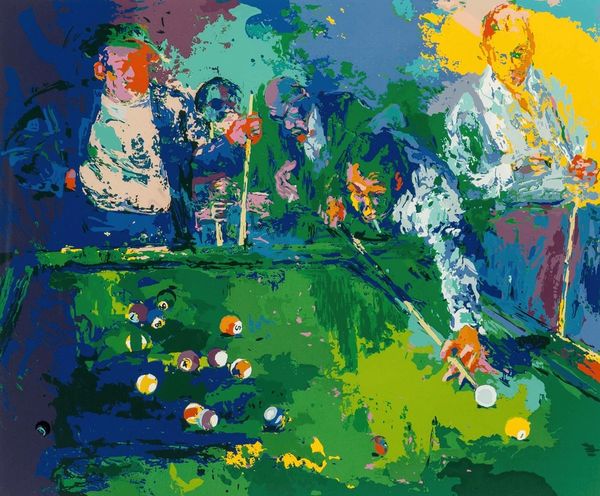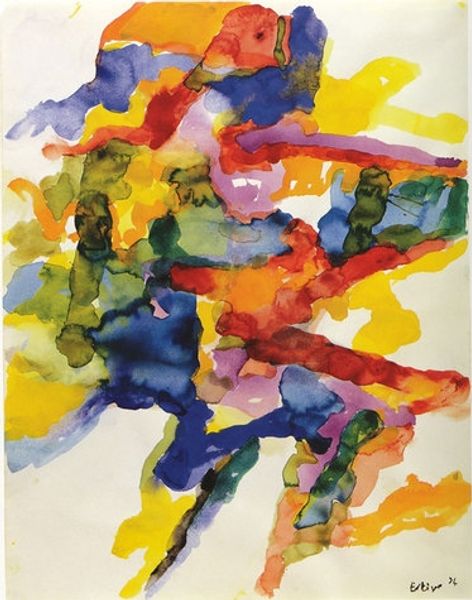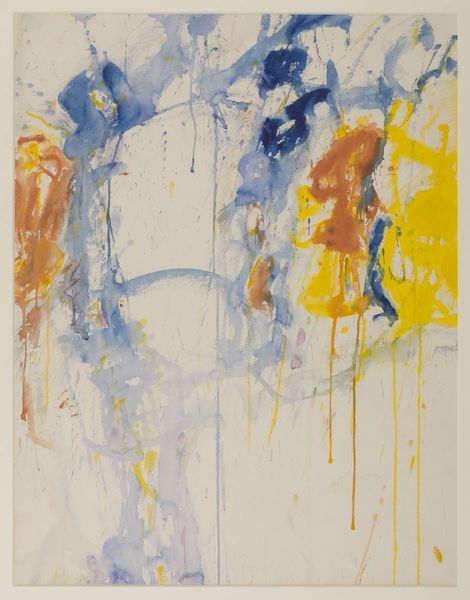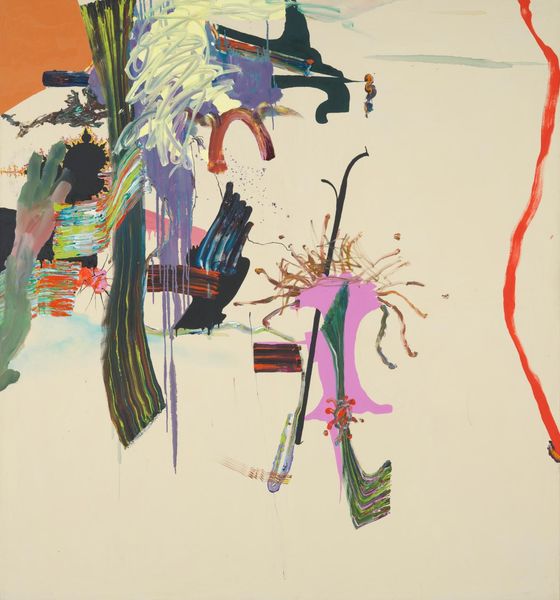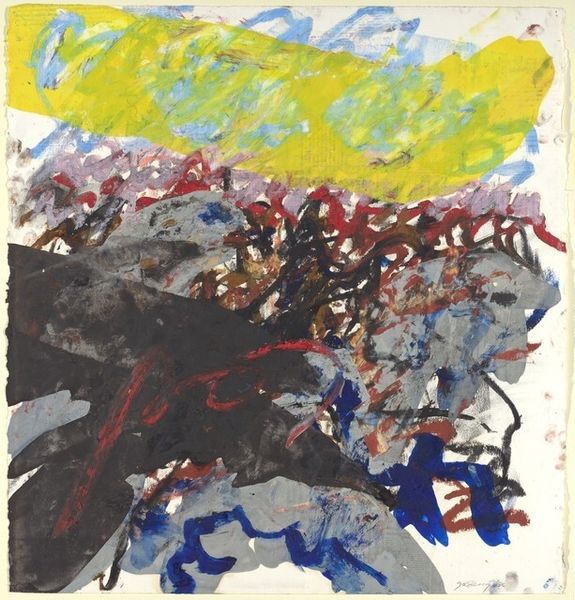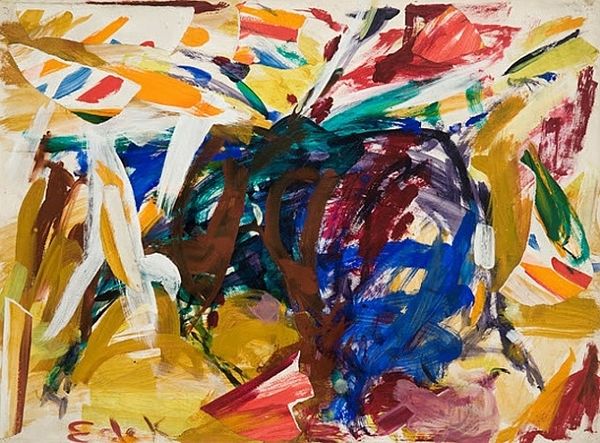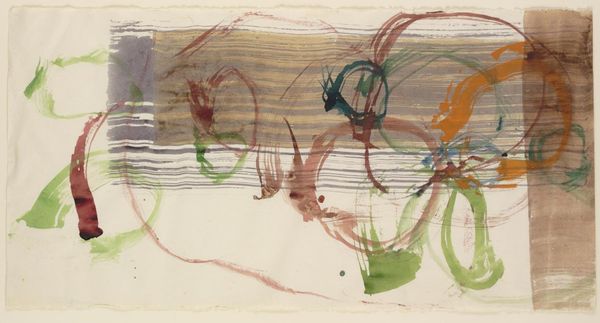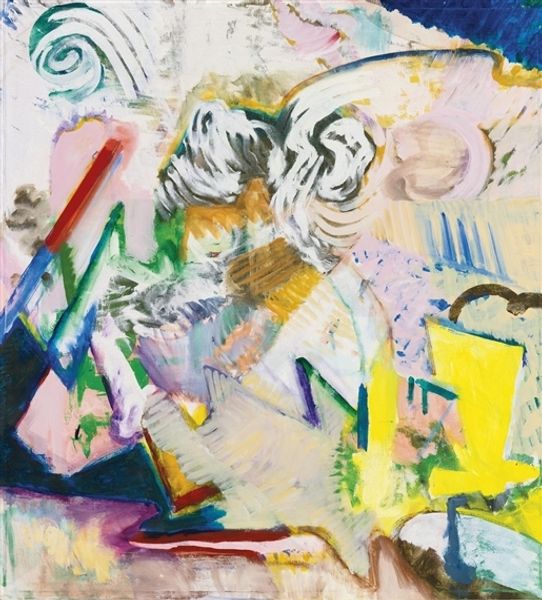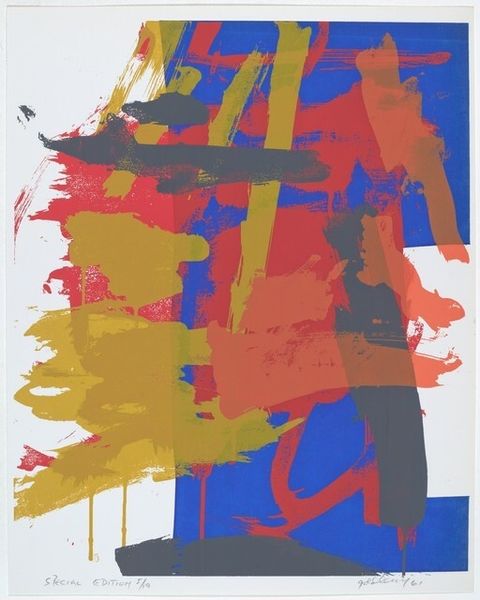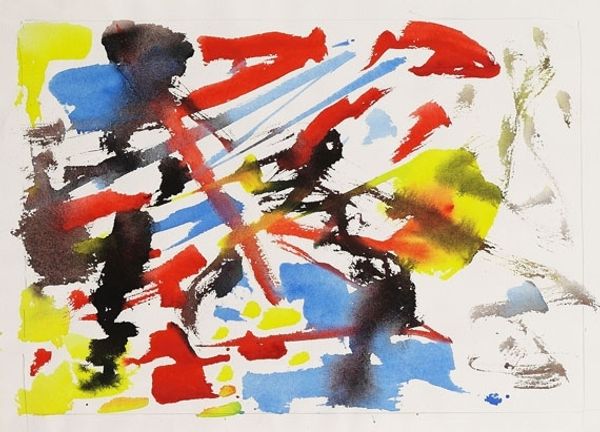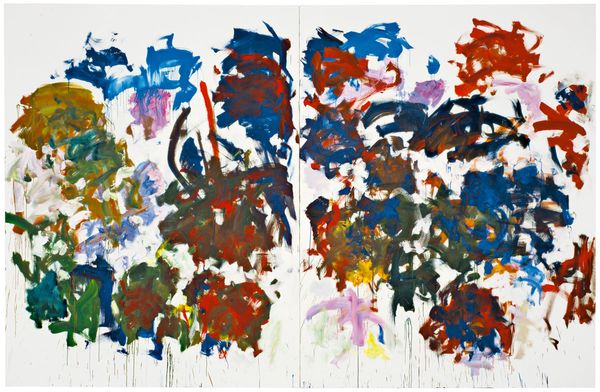
painting, acrylic-paint
#
action-painting
#
painting
#
impressionism
#
landscape
#
pop art
#
acrylic-paint
#
figuration
#
expressionism
#
naive art
#
pop-art
Copyright: Modern Artists: Artvee
Curator: Well, this piece certainly explodes with vibrant energy. Look at how the hues just seem to vibrate against each other! Editor: Indeed. What a spectacle! On display is LeRoy Neiman’s work entitled "Racehorse," an acrylic painting full of exuberance and spontaneity. Immediately, one feels transported to the thunderous heart of the racetrack. Curator: Exactly! Notice how Neiman doesn’t delineate crisp forms but rather offers gestural sweeps of acrylic, capturing the sheer dynamism of the race. It flirts with abstraction while never truly abandoning representation. Editor: And the application! Neiman's distinctive pop art approach is evident here; that vivid colour palette isn't necessarily realistic but heightens the feeling of excitement associated with this highly social spectacle. This wasn't just sport; horse racing held important rituals and social events. Curator: Observe the balance in tension, too. That expansive cerulean backdrop does little to restrain the kinetic movement of those jockeys. Colour-wise, the earth tones ground and support all of that azure exuberance. Editor: It also draws upon Impressionism and Expressionism, stylistically reflecting an obsession of trying to grasp sensations, almost painting the noise. You could sense he wants you to capture not what it looks like but what it feels like to watch such movement and speed. Think about its historical moment; during the post-war expansion of Pop Art, how did leisure culture get visually encoded? Curator: Interesting, to shift our thinking to popular visual experience! You mention feeling and gesture—how it translates human awareness. Those broad, confident strokes suggest both the fleeting nature of the race itself and, potentially, the fleeting nature of how such displays might last in our memories. Editor: In the context of its production and public image, Neiman managed to democratize high art. Though controversial, such sports art became a visual signifier and helped grow contemporary American artistic identity, perhaps giving a fleeting expression, like you pointed out, of the joy that the audience can enjoy through art. Curator: Thank you; yes, so while one might argue that, formally speaking, the forms do, paradoxically, elide into each other...there remains a sense of capturing the raw visceral spirit of racing and experience of the world. Editor: Right; perhaps that ability to stir public excitement is part of why, across many eras, that people respond viscerally when in direct encounter of the painting today.
Comments
No comments
Be the first to comment and join the conversation on the ultimate creative platform.
